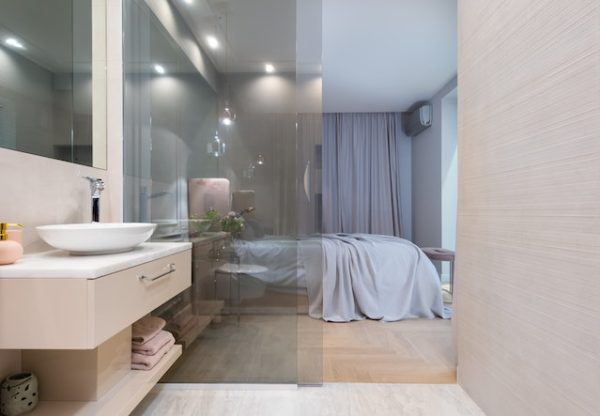PROBLEMS IN A COMMUNITY’S VENTILATION SHUNTS: SOURCE OF ODORS
Although these systems are designed to be safe and efficient, poor maintenance or malfunction can cause these odor problems to occur in the community and neighbors’ homes.
With proper maintenance these problems can be solved, but if proper measures are not taken, they can affect the well-being of the community and cause conflicts between neighbors.
HOW DOES A VENTILATION SHUNT WORK?
Community ventilation is designed to allow air exchange between buildings and the outside.
When creating a building, it is mandatory to install ventilation systems (ventilation shunt) that ensure the correct movement of air.
A community ventilation shunt is a vertical metal pipe, to which the floors and commercial premises of a building are connected. In these holes, from bottom to top, ducts are installed to ventilate certain parts (mainly bathrooms and kitchens) that help eliminate smoke and bad odors. These ducts are ventilation shunts.
The air moves through the shunt, which helps to evacuate the vapor, avoiding the accumulation of moisture, and makes unpleasant odors disappear and allows us to breathe purer air inside the house.
But sometimes, poor installation or poor functioning of ventilation systems can result in uncomfortable odor problems that can affect the community and neighbors and these bad odors from the ventilation systems of a community, can generate conflicts between neighbors.
It is in these cases when the doubt of who corresponds to the responsibility may arise.
Regulations on ventilation systems and community ventilation shunts and household shunts
The Horizontal Property Law states that community ventilation systems (shunt) must be provided for air circulation in shared housing buildings.
This law also requires that these community ventilation systems be maintained and secured by building owners.
It is important that community ventilation systems are properly installed and maintained. Homeowners should ensure that systems are inspected at least once a year to avoid moisture problems and odors. This is also important to make sure ventilation systems are safe.
What the horizontal protection law establishes on ventilation shunts in communities.
The horizontal property law on ventilation shunts
Community ventilation shunts are an essential part of any horizontally owned building. In order to ensure that the ventilation system of horizontally owned buildings remains healthy, horizontal property law requires building managers to perform a number of tasks related to community ventilation shunts. These tasks include:
Inspect community ventilation shunts once a year to ensure they are clean and free of obstructions.
Clean and replace community ventilation shunt filters at least once a year.
Check community ventilation shunts to detect and repair any damage or obstruction.
Ensure that community ventilation shunts are equipped with appropriate safety devices, such as alarms, to detect fires and other hazards.
Inform the owners of the horizontal property about the status of community ventilation shunts.
Record data on the maintenance of community ventilation shunts.
Implement an adequate maintenance plan for community ventilation shunts.
Regulations on ventilation systems and community ventilation shunts and household shunts
The Horizontal Property Law states that community ventilation systems (shunt) must be provided for air circulation in shared housing buildings.
This law also requires that these community ventilation systems be maintained and secured by building owners.
It is important that community ventilation systems are properly installed and maintained. Homeowners should ensure that systems are inspected at least once a year to avoid moisture problems and odors. This is also important to make sure ventilation systems are safe.
The Technical Building Code and ventilation shunts for homes
- Air will circulate from the dry room to the damp room. Therefore, the dining room, bedroom and living room should have air intakes. For its part, the bathrooms, kitchens and toilets will have air extraction openings.
- The exhaust openings shall consist of an aerator or a fixed port. The first should always be more than 1.80 m from the ground. In the case of mixed ventilation, the air intake must be connected directly to the outside.
- They must be uniform vertical ducts without obstacles throughout their journey.
- They must have a finish that hinders the accumulation of dirt.
- They must have points every 10 m. to allow their registration.
- In the case of a collective shunt, they will not serve in any case more than six floors, so that the ducts of the last two floors must be individual.
- The connection of the extraction openings with the collective ducts must be made by vertical branches, each of which will lead to the conduit immediately below the next branch.
- All ventilation shunts, whether they are an individual duct or serve several homes, must be airtight for their sizing pressure.
Some common problems of bad odors in flats and neighborhood communities and what to do about them
In most cases, odor problems in homes and communities are caused by problems in the ducts of the shunts, either by the lack of maintenance of these or by a bad installation of the ventilation systems.
The first step in case of suffering this uncomfortable situation, is to contact the president of the community or the administrator of the farm, so that an endoscopic camera inspection can be done and detect where the problem comes from.
With the camera you can see the state of conservation and the connections of the ducts and determine to their arrangement if appropriate.
These are some of the most common cases for which we perform inspections and repairs on ventilation shunts:
